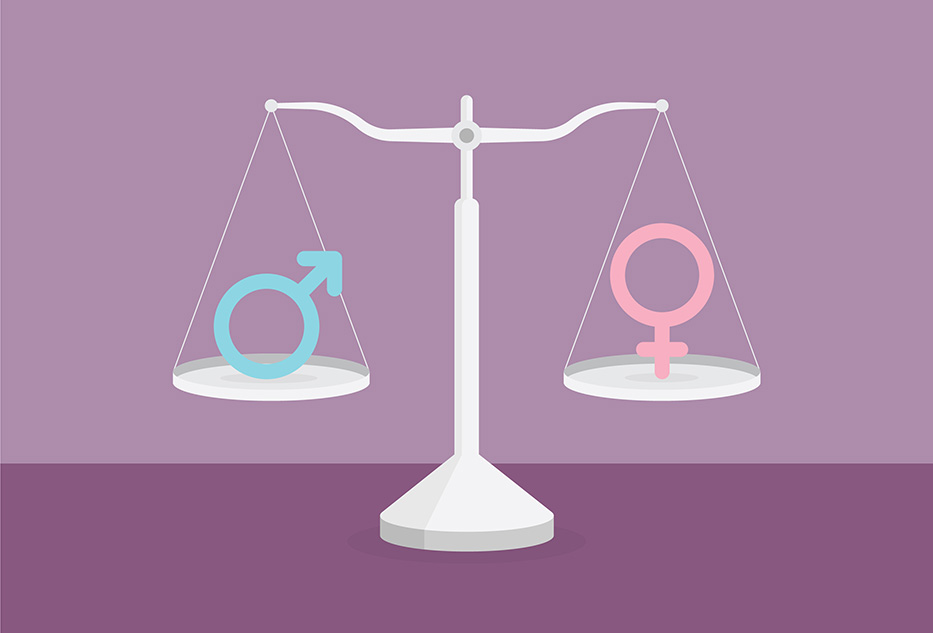By Laura Cooper Wedekind
A 2019 McKinsey study on women in the workplace revealed that only 1 in 5 C-suite executives is a woman, and just 1 in 25 is a woman of color. What’s more, according to the Bureau of Labor Statistics, women last year made just 82 cents in their careers versus $1 per men, and the gap is even wider for women of color.
At the current rate of change, it will take another seven decades before we reach total gender equality in the workforce. In Franklin County where Steiner + Associates is based, women make up more than half of the population, making this gender gap a particularly potent issue for its citizens and organizations.
On the Front Lines of Change
In late 2017, the city of Columbus’ Women’s Commission—with support from Mayor Andrew Ginther and his wife, Shannon—launched the Columbus Commitment: Achieving Pay Equity to bring the city’s employers to the frontlines of change. The intent is to share best practices and experiences with other signatories in order to improve our community’s overall gender and race-based wage gap and achieve pay equity.
Steiner + Associates was one of the first organizations to sign the Columbus Commitment, and since our pledge in 2017, we have taken tangible action to support our commitment to gender equity. We wanted to be part of the pledge early on for a couple of big reasons—one, Steiner has several women in leadership positions, myself included; and two, we have always been interested in ensuring our organization has pay equity across all of our positions.
Taking Action
The first thing we did after signing the Columbus Commitment was conduct a study of all employees across positions to ensure we had complete equality and commit to correct anything we found to the contrary. This analysis showed that we did, in fact, pay people equally regardless of their sex, based on equal positions within the organization.
Once the study had concluded, we began to focus more of our efforts on mentorship and leadership development. This resulted in the formation of a young professionals group which brought together a group of up-and-coming talent for networking opportunities, curated speaker discussions, and regular meetings with leadership to create and maintain a defined career development path. This has been a success within Steiner, and has no doubt contributed to the advancement of our future leaders—some of whom are women.
Another way we’re taking action to eliminate gender inequity is in the hiring process. Historically, similar to most organizations, when we interviewed people we would ask what they were making before we negotiated their salary. This practice potentially continues the problem of gender equality. We are shifting away from this practice and focusing more on the required skills for the role, the experience they bring and the market for the position.
Lastly, we took a close look at our core values and decided to add a pillar about inclusion. While Steiner has always been inclusive, we wanted to draw attention to it, set the tone for our culture, and ensure we’re holding ourselves accountable throughout our organization.
The value reads as follows:
- We promote Inclusion of all peoples in the workplace, in our projects, and in the pursuit of our vision.
And if you’re wondering what exactly that vision is, we define it as follows:
- We envision people seeking to live in healthy, prosperous, and sustainable communities that contribute to their wellbeing with a sense of purpose and social belonging.
We also revised our holiday schedule and added a few such as Juneteenth and Indigenous as part of our strategy of broader inclusivity.
It Starts with You
Whether you’re part of a small business with fewer than 50 employees, a mid-size company like Steiner with 150 employees, or an enterprise with thousands of employees, programs like the Columbus Commitment are effective because they spark action and cement commitments to ensuring inequity does not exist.
While it’s likely our team would have moved forward with our initiatives regardless of signing the pledge, we were emboldened by the Commitment as a way to measure what we were doing against peers in the community, share what we learned with those organizations, and take in best practices from others that we might not have thought about before.
The battle against workplace disparity starts with hiring—making sure you’re not starting that inequality out of the gate. It also involves analyzing your current staff and adjusting as needed to ensure disparities do not exist. Undergoing these processes all but guarantees you’ll emerge a better, more prosperous and wholly equal organization in the long term.






